The Hague School is a term referring to the work of a group of artists who worked in The Hague between 1860 and 1890. These artists were inspired by the achievements of the Barbizon School. Following the realistic paintings of their French predecessors, these painters discovered the landscape of the Hague coast as well as the rural life of the local population. Prominent Hague School artists are Paul Gabriel, Jacob Maris, Matthijs Maris, Willem Maris, Anton Mauve, Johannes Bosboom, Jan Hendrik Weissenbruch, Theophile de Bock, Isaac Israëls, George Poggenbeek.
Notable Artwork from the Hague School
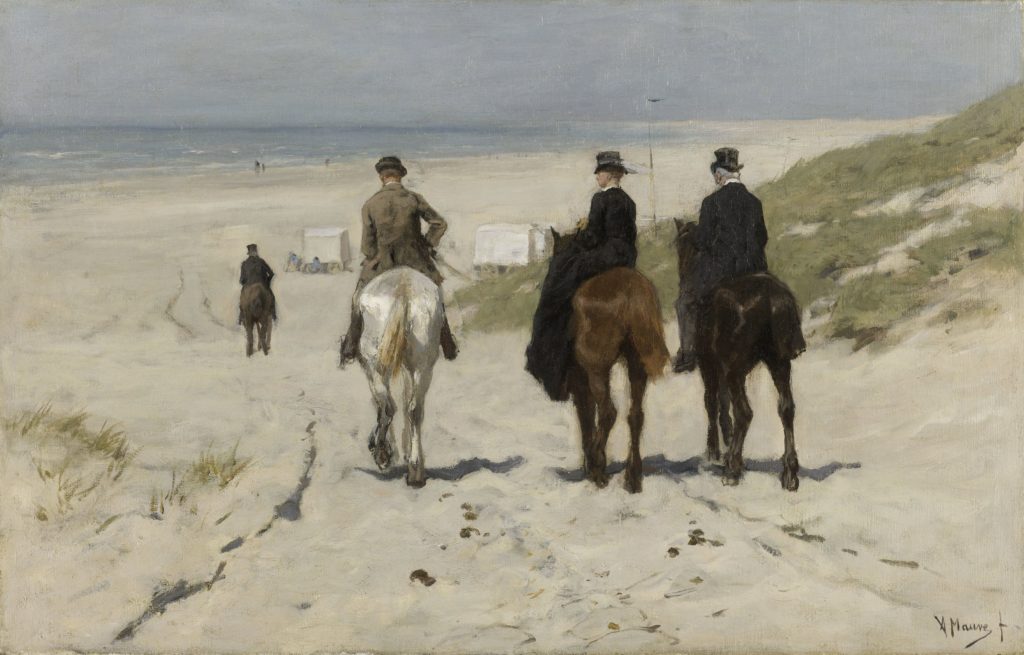
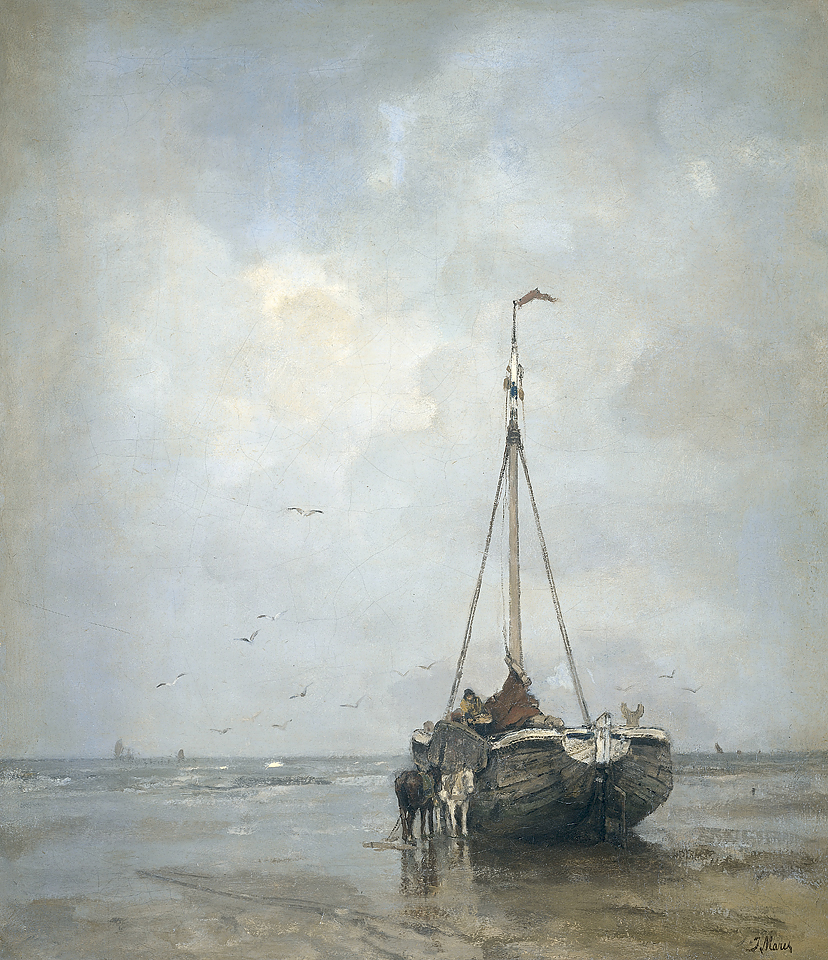
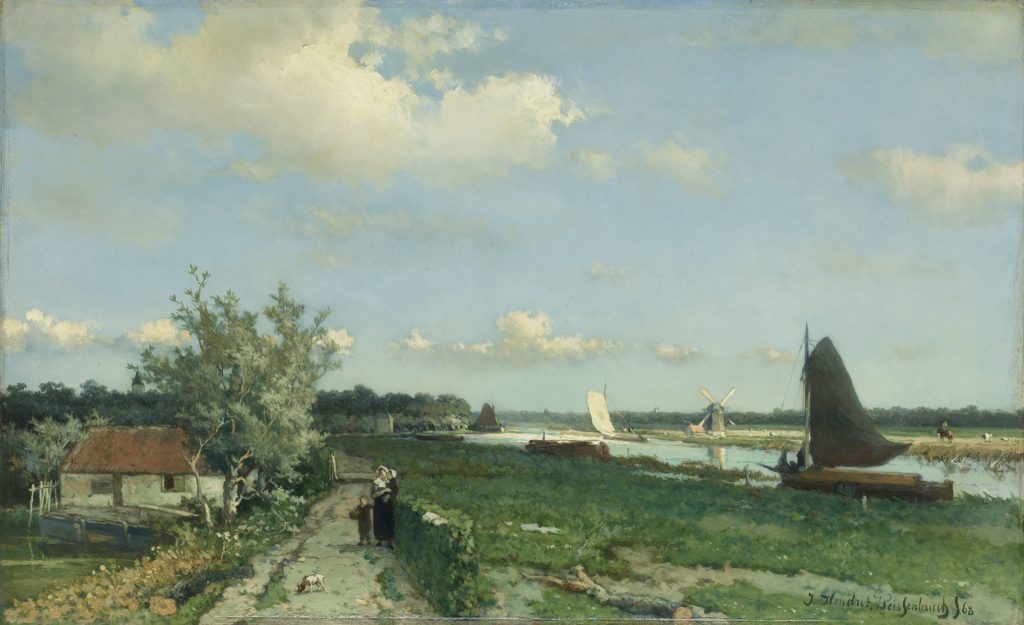
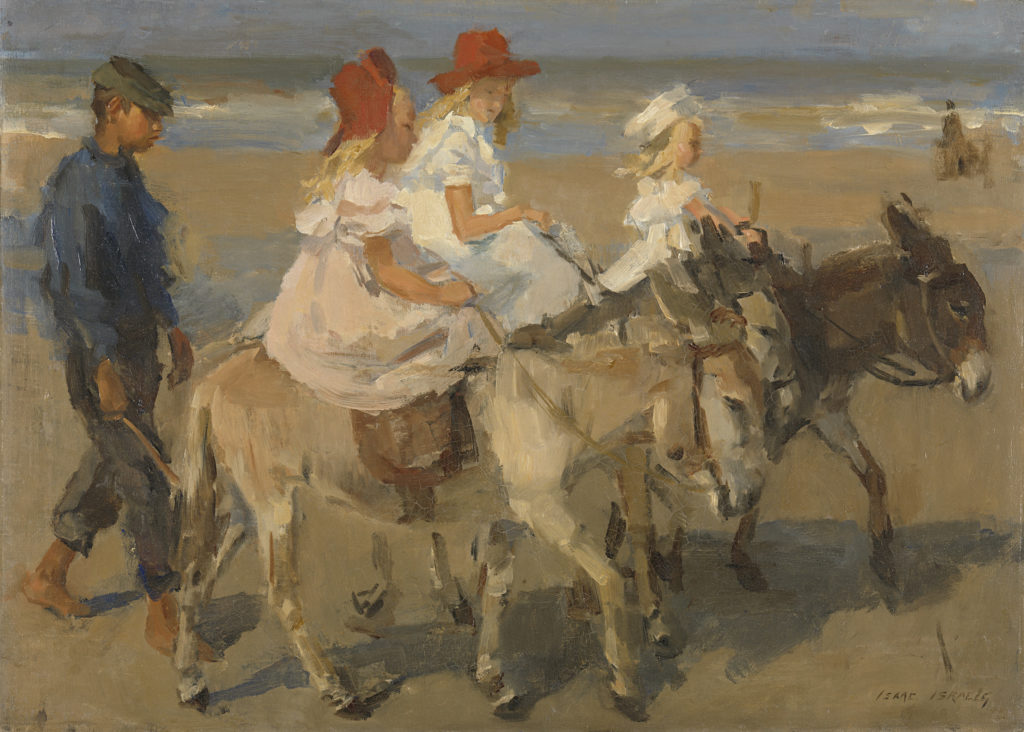
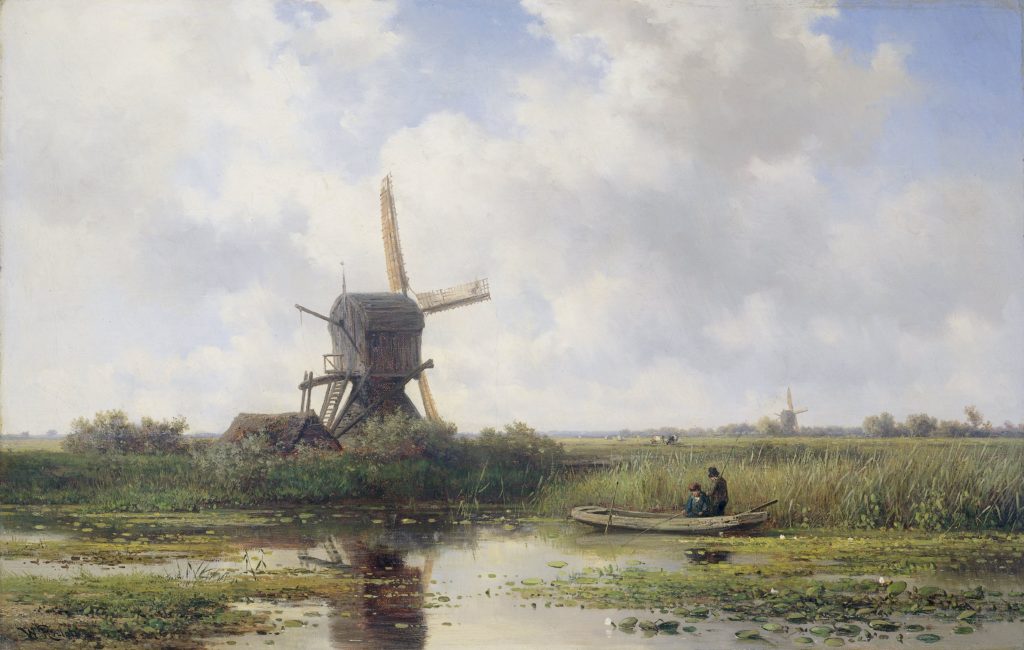
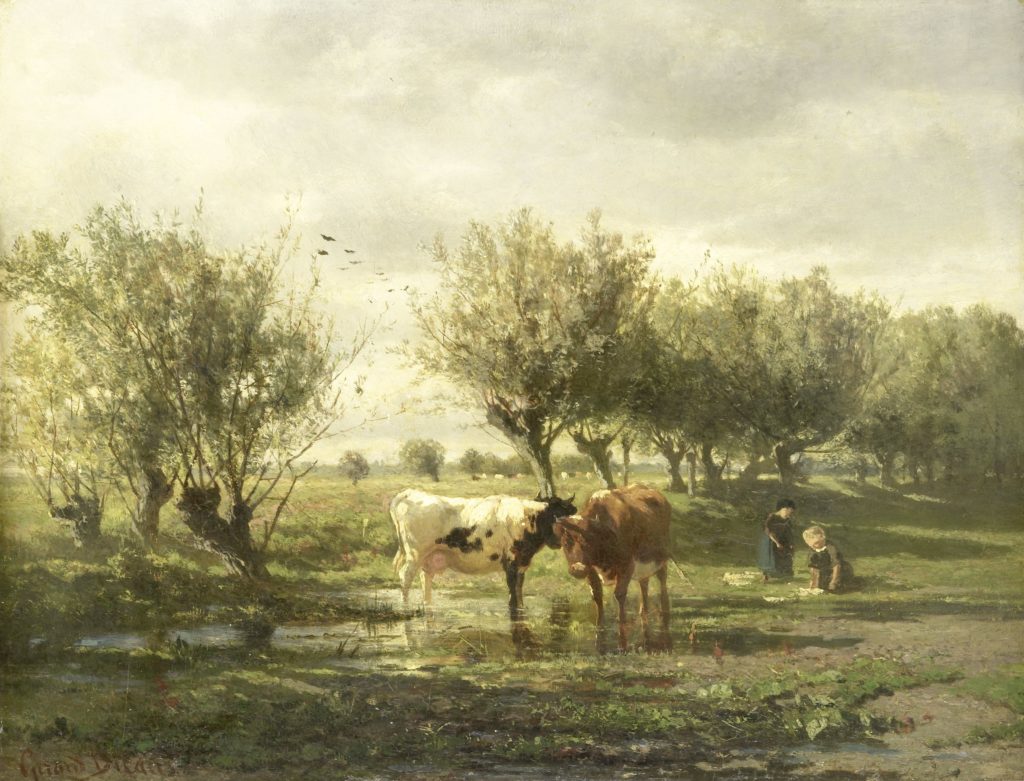
Barbizon influences and Oosterbeek
The Barbizon School phenomenon had a significant impact on Dutch painting and culture in the mid-19th century. Increasingly rapid processes of industrialization have transformed large cities such as Amsterdam and Rotterdam, from which many artists, driven by naturalist ideas, wanted to move away. The Dutch equivalent for Fontainebleau was Oosterbeek, which in the 1850s became an important place for the development of the new landscape art based on Plain air painting. Johannes Warnardus Bilders who moved here for this purpose attracted many like-minded people like Maris brothers, Jacob, Willem and Matthijs, Anton Mauve, Willem Roelofs and Paul Gabriël. Many Dutch painters who worked in this colony later in the 1860s were responsible for forming the Hague School.
Pulchri Studio
A very important institution for the development of early modern art in the Netherlands is the Pulchry Studio. This art society brought together Dutch artists whose work differed from the official classicist currents. Guided by modern ideas, these artists created an institutional framework that included a working studio, exhibition space and space for accommodation based in The Hague.
Pulchri Studio was founded in 1847 at the home of painter Lambertus Hardenberg. Numerous members were painters, sculptors, photographers, selected by a committee. The pastoral nature of the environment in which this association developed with the immediate vicinity of the Scheveningen coast significantly influenced the range of motifs that the painters dealt with. The clearly defined institutional framework that existed in this study separated it from the Barbizon or Oosterbeek colony. The rights and obligations of the members were clearly defined as well as exhibition policy. This association institutionalized a debate about new works of artists among colleagues, which was called art considerations.
Many painters of the Hague School were part of this organization and often held important positions in it. Some of them are Jan Hendrik Weissenbruch, Johannes Bosboom, Jozef Israëls, Willem Maris, and Anton Mauve.
Realism of the Hague School
In the late 1860s and early 1870s, all the key artists of the Hague School settled in The Hague. In addition to Willem Maris, Johannes Bosboom and Weissenbruch who lived in the city before, Hendrik Willem Mesdag, Jacob Maris, Jozef Israëls and Anton Mauve were newcomers to the city. Long-term acquaintances tied these artists into a harmonious commune that nurtured modern expression in painting. The Hague School generally did not have a manifesto or a uniform artistic expression, it is a set of value frameworks and sensibilities that its members built in Barbizon, Oosterbeek, Düsseldorf, Brussels, as well as at the Pulcher Studio.
Jacob van Santen Kolff, who coined the term Hague School in 1875, pointed out that the common artistic value of these artists is reflected in a specifically dimmed palette based on gray tones, often in art history the term The Gray School for Hague painters can be found. In addition to the refined qualities of the ubiquitous gray component in the painting of this group, another important feature stands out as a common value. It is giving up imitating nature and creating so-called mood painting.
It is especially noticeable in landscapes – the tendency to isolate the sentimental capacity that nature provides. These painters did not aim to achieve meticulously conveying natural forms. In addition to coastal landscapes, port scenes, fishing boats, farms and windmills, the Hague School painters very often painted animals in their natural environment. City views and urban motifs from city life can also be found in their colorful opus.
The Dutch landscape of the Hague school
The landscape was the most common genre of artists of the Hague School. It is the redefinition of landscape painting in the history of Dutch art that is connected to this group of painters. Drawing on the rich tradition of the Golden Age of landscape painting, the Hague School painters approached this genre with modern means and new goals. The character of the Hague School landscape does not bring ideal scenes of nature or monumentality characteristic of 17th-century painting. The new vision of the Dutch landscape presented by these artists developed on the idea of evoking the atmosphere of the ambience. They often used color solutions and a spectrum of tones that do not belong to the natural whole that they represent in order to record the mood that awakens the presence in that space. In their work on landscapes, these painters often used tones from a wide range of gray and a generally darker palette. The modern approach to the landscape is reflected in transferring to the canvas the imperfections of the scene as well as introducing abstract elements.
Impressionist Influences
During the 1870s and especially during the 1880s, the painters of the Hague School became increasingly interested in a brighter, more airy palette. This change in the predominant color is attributed to the influence of Impressionism. The very bright spectrum of colors used by the French Impressionists gradually conquered the palette of Hague painters. These shifts marked the beginning of the formation of a new artistic movement that arose from the experience of painting at the Hague School, and that is Amsterdam Impressionism.
Notable artists
- Paul Gabriel (1828 – 1903)
- Jacob Maris (1837 – 1899)
- Anton Mauve (1838 –1888)
- Joseph Israel (1824 – 1911)
- Willem Maris (1844 – 1910)
- Jan Hendrik Weissenbruch (1824 – 1903)
- Sina Mesdag-van Houten (1834 – 1909)
- Matthijs Maris (1839 – 1917)
- Johannes Bosboom (1817 – 1891)
- Johannes Evert Hendrik Akkeringa (1861 – 1942)
- Floris Arntzenius (1864 – 1925)
- Bernard Blommers (1845 – 1914)
- Theophile de Bock (1851 – 1904)
- Isaac Israëls (1865 – 1934)
- Albert Neuhuys (1844 – 1914)
- George Poggenbeek (1853 – 1903)
- Julius van de Sande Bakhuyzen (1835 – 1925)
